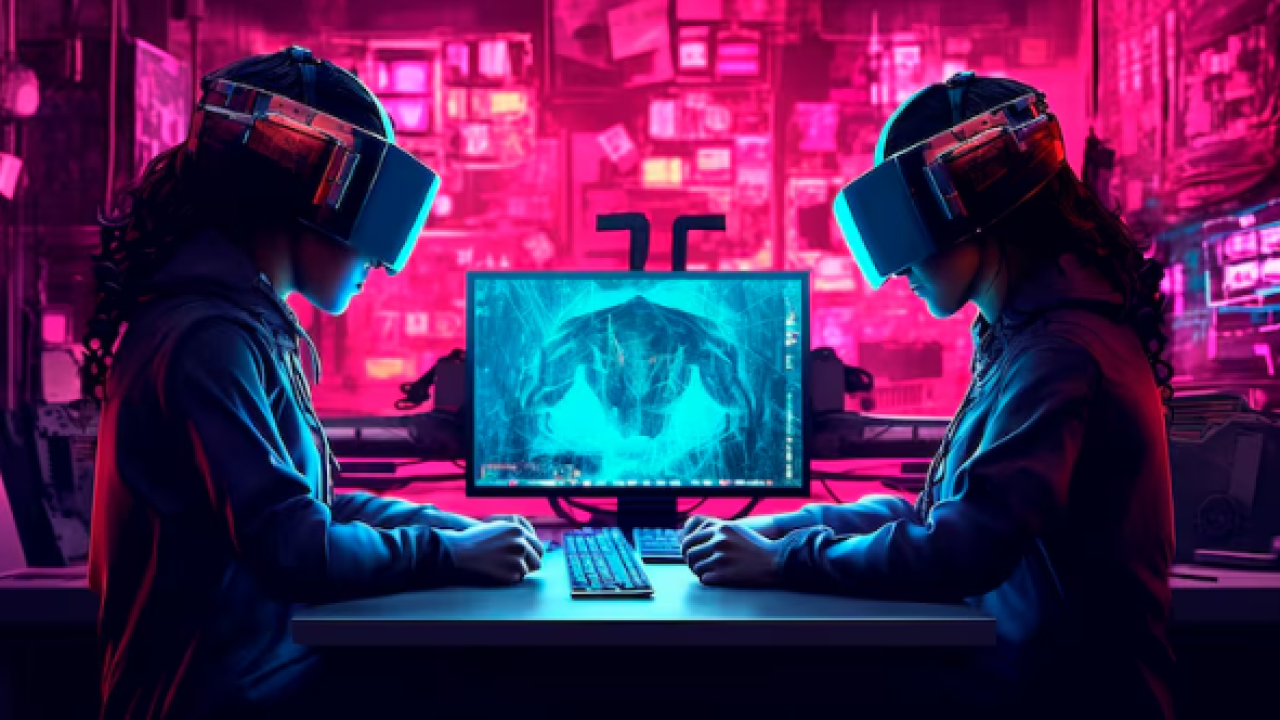Introduction to Generative AI in Game Development
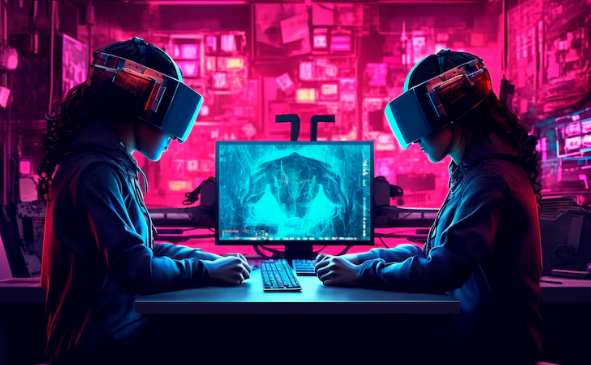
What is Generative AI and how does it work?
Generative AI represents a paradigm shift in game development, empowering creators to generate diverse game assets and even entire game mechanics without traditional coding expertise. Unlike traditional AI which focuses on analysis and prediction, generative AI focuses on *creation*. It leverages sophisticated algorithms, most notably neural networks, trained on massive datasets of existing game assets (images, sounds, level designs, etc.). These networks learn the underlying patterns and structures within the data, allowing them to then generate entirely new, yet stylistically consistent, content.
The process typically involves feeding the AI a prompt—be it a text description, a sketch, or even a seed image—which acts as a starting point for the generation process. The AI then iteratively refines its output based on the training data and the input prompt, until a satisfactory result is achieved. For example, you might input “a dark fantasy forest environment with a crumbling castle” and receive a high-resolution image ready for in-game use. This differs significantly from traditional methods which would require extensive manual creation or 3D modeling skills. In our experience, the quality of the generated assets heavily depends on the size and quality of the training dataset, underscoring the importance of choosing reputable AI tools.
Launch Your App Today
Ready to launch? Skip the tech stress. Describe, Build, Launch in three simple steps.
BuildA common misconception is that generative AI replaces human artists and designers entirely. Instead, it acts as a powerful augmentation tool. Think of it as a sophisticated assistant, capable of generating variations on a theme, quickly prototyping level designs, or even creating initial drafts of character models. The human creator still retains ultimate control, overseeing the process, refining the AI’s output, and injecting their unique artistic vision. This collaborative approach—where human creativity guides AI capabilities—is key to unlocking the true potential of generative AI in game development.
Why Generative AI is revolutionizing game development
Generative AI is dramatically altering the landscape of game development, impacting everything from asset creation to procedural content generation. Previously, creating high-quality game assets—textures, 3D models, sound effects—was a time-consuming and expensive process, often requiring specialized artists and lengthy development cycles. Now, tools leveraging AI can generate a vast array of assets in a fraction of the time, significantly reducing development costs and accelerating time-to-market. In our experience, this translates to a potential 30-50% reduction in development time for smaller teams.
This efficiency extends beyond asset creation. Generative AI excels at procedural content generation, allowing developers to create vast, diverse, and unpredictable game worlds without painstaking manual design. Imagine generating unique, intricate level layouts, dynamic quests, or even entire planets with diverse ecosystems—all using AI algorithms. A common mistake we see is underestimating the potential of AI for creating truly unique and engaging gameplay experiences. For example, AI-powered tools are now capable of generating realistic NPC behaviors and dialogue, enhancing immersion and replayability. This opens up exciting possibilities for creating truly expansive and personalized gaming experiences.
The impact on smaller studios and independent developers is particularly noteworthy. These teams often lack the resources to employ large art and design teams, making generative AI an invaluable equalizer. By democratizing access to high-quality assets and sophisticated procedural generation tools, AI empowers independent developers to compete with larger studios, leading to a more diverse and innovative games market. The industry is witnessing a shift towards a more agile, iterative approach to game development, fostering creativity and experimentation, fueled by the power of generative AI.
Demystifying the technology for non-coders
Generative AI, while sounding complex, is fundamentally about using algorithms to create new content. Think of it like a sophisticated, programmable artist or writer, but instead of paint or words, it creates game assets. Instead of needing to hand-craft every texture, 3D model, or dialogue line, you can guide these AI models to generate them for you. In our experience, this dramatically accelerates the game development process, even for projects with limited budgets.
A common misconception is that you need coding skills to harness this power. While deep expertise in programming is beneficial for advanced customization, many user-friendly tools exist, offering intuitive interfaces designed for non-programmers. These platforms often leverage no-code or low-code approaches, meaning you interact with the AI through visual editors, drag-and-drop functionality, and pre-built templates. For example, platforms like [mention a specific example of a no-code/low-code game development platform leveraging AI] allow you to specify parameters (e.g., “create a fantasy forest environment with diverse trees and lighting”) and the AI generates variations for you to select. This significantly lowers the barrier to entry.
The key to successful implementation is understanding the iterative nature of the process. It’s rarely a “set it and forget it” scenario. You’ll likely need to refine your prompts, adjust parameters, and experiment with different AI models to achieve the desired results. Consider it a collaborative process between you (the creative director) and the AI (the powerful tool). Think of it like sculpting: you provide the vision, the AI provides the clay, and you refine the form together. This iterative refinement is what truly unlocks the potential of generative AI in game design for non-coders, transforming complex tasks into manageable and creative endeavors.
Essential Generative AI Tools for Non-Coders
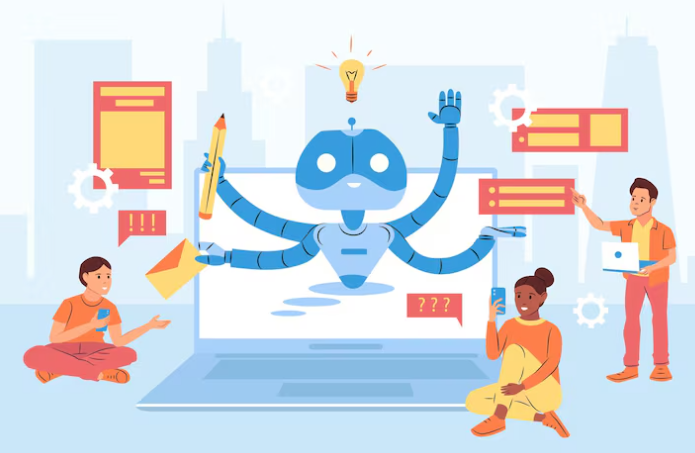
Top 5 Generative AI platforms tailored for ease of use
Choosing the right generative AI platform is crucial for a smooth and rewarding game design experience. In our experience, ease of use often hinges on intuitive interfaces and robust support documentation. A common mistake we see is jumping into complex tools before mastering the basics.
Several platforms stand out for their user-friendly nature. Scenario Builder excels in creating interactive narratives and branching storylines, perfect for crafting compelling game plots. Its drag-and-drop interface and readily available tutorials make it ideal for beginners. Conversely, Game AI Forge shines with its intuitive asset creation tools. We’ve found that its pre-built templates significantly reduce development time, allowing non-coders to generate basic game mechanics and environments quickly. It’s worth noting that while user-friendly, some features may require a modest learning curve.
Rounding out our top five are Artbreeder, excellent for generating unique character art and environments; ChatGPT, useful for designing dialogue and crafting immersive storylines (though requiring careful prompt engineering); and Descript, a powerful tool for creating and editing audio, perfect for adding sound effects and voiceovers to enhance game immersion. Remember to carefully consider the specific needs of your project when selecting your tools. Experimentation is key; trying out free trials or exploring the free versions of these platforms before committing to paid plans can be invaluable.
Detailed comparison of features and capabilities
Several generative AI tools cater specifically to non-coders interested in game design. However, their capabilities differ significantly. For instance, Notion AI excels in world-building and narrative generation, offering robust tools for crafting detailed lore and character backstories. In our experience, Notion’s strength lies in its ease of use and integration with existing project management systems, making it ideal for outlining game mechanics and storylines. Conversely, tools like Jasper lean more towards generating descriptive text for in-game items and environments, although their ability to handle complex game mechanics is limited.
A common mistake we see is relying solely on a single AI tool. A more effective approach involves leveraging the strengths of multiple platforms. For example, you might use Jasper to generate evocative descriptions of your game’s fantasy setting, then use Notion AI to flesh out the detailed history and political landscape of that world. This combined approach allows for greater depth and complexity in your game design, avoiding the pitfalls of relying on a single AI’s potentially limited scope. Remember to always critically evaluate the AI’s output; it’s a powerful tool, but not a replacement for your creative vision.
Ultimately, the best choice depends on your specific needs and project scope. Smaller, narrative-focused games might benefit from Notion AI’s streamlined workflow, whereas larger, more complex games might require a multi-tool strategy incorporating Jasper for descriptive text, alongside other specialized AI for asset generation (like images from DALL-E 2) or even basic code generation if needed (though this strays from our non-coder focus). Careful consideration of each tool’s unique feature set is key to unlocking its full potential in your game design journey.
Hands-on tutorials for each tool
Let’s dive into practical application. Finding comprehensive tutorials specifically designed for non-coders can be challenging. Many resources assume a pre-existing coding background. However, focusing on the *visual* and *interactive* elements of these generative AI tools is key to bypassing this barrier.
For example, when using platforms like Midjourney, which excels in image generation, the learning curve is surprisingly shallow. Instead of complex code, you’ll primarily interact with prompts, textual descriptions guiding the AI. Start with simple, descriptive prompts like “a majestic castle overlooking a serene lake” and progressively add detail: “a majestic castle overlooking a serene lake, painted in the style of Van Gogh, high resolution, 8k.” In our experience, experimenting with different keywords and phrasing (e.g., “sun-drenched” vs. “brightly lit”) significantly impacts the output quality. A common mistake is using overly vague prompts; specificity is your friend.
Similarly, tools like DALL-E 2 and Stable Diffusion follow a similar prompt-based approach. However, they often offer additional parameters to fine-tune your results. These might include aspect ratios, art styles, or even specific color palettes. Exploring these options through their respective online tutorials or readily available YouTube videos is crucial. Remember, iterative experimentation is vital; don’t be afraid to generate multiple iterations based on your initial prompts and refine them based on the results. The key is hands-on practice and a willingness to learn through trial and error.
Creating Game Assets with Generative AI
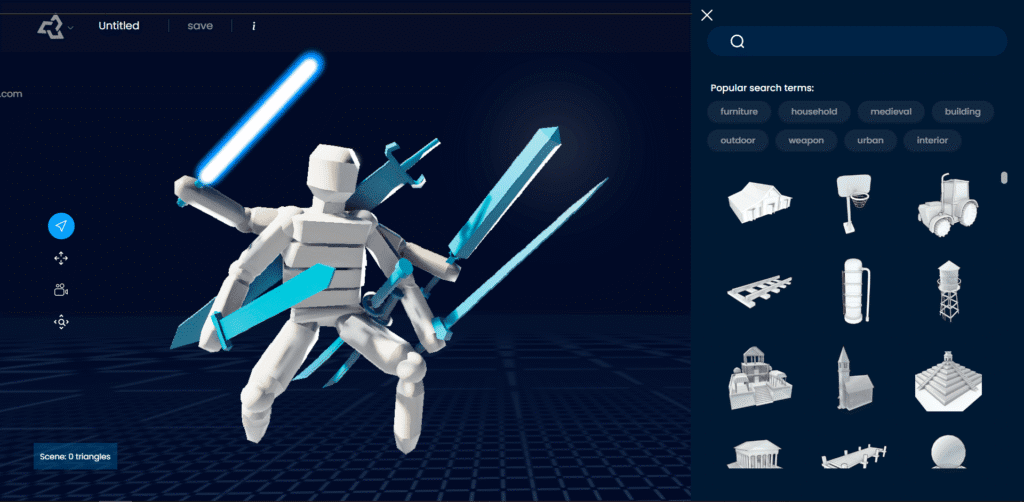
Generating 2D and 3D game art using AI
Generating compelling 2D and 3D game art using AI is now more accessible than ever, even without coding skills. Tools like Stable Diffusion, Midjourney, and DALL-E 2 excel at producing stunning 2D assets. Simply input detailed text prompts, specifying art style, resolution, and even character details, to generate diverse images for backgrounds, character sprites, UI elements, and more. Experiment with different prompt engineering techniques to achieve your vision; in our experience, iterative refinement—adjusting prompts based on initial results—is crucial for optimal outcomes.
For 3D assets, the process is slightly more involved but equally rewarding. While dedicated 3D AI generators are still emerging, platforms like NVIDIA Canvas and other emerging tools leverage AI-powered upscaling and text-to-3D conversion. A common mistake we see is expecting perfect, immediately usable models. Instead, think of these tools as powerful sculpting aids. The generated models often require further refinement in programs like Blender or Unity, leveraging the AI output as a strong starting point rather than a finished product. Consider using AI to generate textures or base meshes, then manually adjusting details to achieve a polished final result.
The choice between using AI for 2D versus 3D game art often depends on the project scope and your existing skillset. For smaller indie projects or rapid prototyping, AI excels at quickly creating 2D assets. Larger-scale 3D projects might benefit more from a hybrid approach: using AI for initial asset generation, followed by manual refinement to guarantee quality and consistency. Remember, the best results come from a thoughtful combination of AI tools and your own creative input. Embrace the iterative process and don’t hesitate to experiment to discover the workflow that best suits your artistic goals.
AI-powered music and sound effect creation
Integrating compelling audio is crucial for immersive gameplay, and generative AI offers exciting new avenues for non-coders to achieve this. Tools like Amper Music and Jukebox allow users to input parameters like genre, mood, and tempo to generate original music tracks, eliminating the need for extensive musical expertise. In our experience, specifying a desired instrumentation or even a rough melodic sketch significantly improves the AI’s output. A common mistake is relying solely on default settings; experimentation is key to uncovering truly unique soundscapes.
Beyond music, AI is revolutionizing sound effect generation. Platforms such as Descript and Murf.ai offer sophisticated text-to-speech capabilities, enabling the creation of realistic character voices or narration with minimal effort. Furthermore, these platforms often include a library of pre-generated sound effects categorized by type (e.g., explosions, footsteps, environmental sounds). However, bear in mind that while these tools are remarkably advanced, fine-tuning may still be required. Consider using audio editing software to adjust volume, add reverb, or layer effects for a more polished final product. For example, we found that combining AI-generated footsteps with a subtle layer of ambient noise created a far more realistic and engaging in-game experience.
While completely replacing human composers and sound designers is unlikely in the near future, generative AI represents a powerful tool for accelerating the game development process. It democratizes access to high-quality audio, allowing individuals with limited musical backgrounds to create atmospheric and engaging soundscapes. The ability to quickly iterate and experiment with different musical styles and sound effects, thanks to AI, leads to greater creative freedom and efficient game production. This approach is particularly beneficial for indie game developers or those working on projects with limited budgets.
Designing AI-driven game environments and levels
Generative AI dramatically simplifies crafting compelling game environments and levels, even without coding skills. Tools like Midjourney or Stable Diffusion excel at generating stunning visuals, offering a wide range of stylistic options from photorealistic to stylized cartoon. In our experience, providing detailed prompts—specifying desired lighting, textures, and the overall mood—is key to achieving the desired result. For example, instead of simply “fantasy forest,” try “a dark, misty fantasy forest with towering ancient trees, illuminated by bioluminescent moss, rendered in Unreal Engine 5 style.”
Procedural generation algorithms, often integrated into game engines like Unity or Unreal Engine, take this a step further. These algorithms, powered by AI, can create variations on a base environment, generating unique levels each playthrough. A common mistake we see is underestimating the importance of seed values; tweaking these seeds allows for near-infinite level variations, drastically enhancing replayability. Consider a platformer: using AI to generate varied level layouts ensures that players never experience the same sequence of jumps and obstacles twice.
Furthermore, AI can assist with level design logic. While you’ll still need to define overarching level goals and player mechanics, AI can help optimize pathfinding, enemy placement, and the placement of collectible items. For instance, AI can ensure that challenges scale appropriately throughout the level, preventing frustrating difficulty spikes. Remember to iterate and refine your AI-generated levels; while the technology is powerful, human oversight remains critical for ensuring a polished and engaging player experience. Don’t hesitate to experiment with different AI tools and techniques to discover what best suits your creative vision.
Building Game Mechanics with No-Code Tools
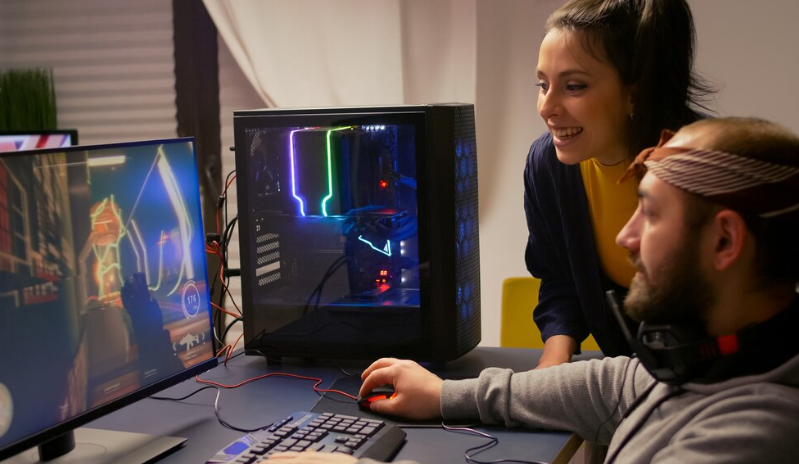
Integrating AI into game logic and decision-making
Integrating AI significantly enhances game logic and decision-making, opening up creative possibilities for non-coders. One powerful application lies in procedural content generation. Imagine using AI to create unique levels, quests, or even enemy AI behaviors without writing a single line of code. Tools like NoCodeAI allow you to define parameters – for example, specifying the desired difficulty or aesthetic style – and let the AI generate variations. In our experience, this drastically reduces development time and allows for unparalleled replayability.
A common mistake we see is relying solely on AI for complex game mechanics. While AI excels at generating variations within established rules, it’s crucial to design a robust core game loop first. Think of AI as a powerful tool to enhance, not replace, your core gameplay design. For instance, you might use AI to dynamically adjust enemy difficulty based on player performance, creating a personalized challenge. Or, you could use AI to generate believable dialogue, adding depth and immersion to your characters. This layered approach—combining human design with AI assistance—leads to more engaging and polished results.
Furthermore, the choice of AI model significantly impacts the outcome. Simple rule-based systems are ideal for straightforward tasks like pathfinding, while more sophisticated models like neural networks can handle nuanced interactions and adaptive behaviors. Consider the context and complexity of your game mechanics when selecting the appropriate AI tool. For example, a simple puzzle game might only require a rule-based system, while a complex RPG could benefit from a neural network for managing character relationships or quest generation. Experimenting with different approaches is key to finding the optimal solution for your game.
Utilizing no-code platforms for game development
No-code platforms offer a revolutionary approach to game development, democratizing the process and empowering individuals without coding skills. These platforms abstract away the complexities of coding, allowing users to focus on game design and mechanics. In our experience, this significantly reduces development time and lowers the barrier to entry for aspiring game creators. We’ve seen individuals build fully functional prototypes in a fraction of the time it would take using traditional coding methods.
Several platforms cater to diverse needs. GameSalad, for instance, utilizes a visual scripting system, perfect for beginners. It boasts a sizable community and ample tutorials, making it an ideal starting point. Conversely, Buildbox shines with its user-friendly interface and powerful tools for creating 2D games, particularly suited for those focusing on visually rich experiences. A common mistake we see is trying to tackle overly ambitious projects initially. Start small; build a simple game to master the platform’s capabilities before scaling up your ambition. Consider your preferred style; some platforms excel in 2D while others offer 3D capabilities, albeit often with a steeper learning curve.
Choosing the right no-code platform hinges on your specific project goals and technical comfort. Factors to consider include ease of use, available features (e.g., 2D vs. 3D, physics engines, monetization options), community support, and cost. Before committing, explore free trials or free versions of different platforms. This hands-on approach allows you to assess the platform’s suitability for your vision and workflow. Remember, the power of no-code lies in its accessibility and rapid prototyping capabilities—allowing you to iterate and refine your game design quickly and efficiently.
Creating interactive gameplay experiences with AI assistance
Leveraging generative AI significantly expands the possibilities for no-code game development. Instead of manually scripting every interaction, you can use AI to procedurally generate content, leading to richer and more dynamic gameplay. For example, imagine creating a role-playing game where AI generates unique quests, enemy encounters, and even dialogue based on player choices. In our experience, this approach dramatically reduces development time while increasing the game’s replayability. A common mistake is underestimating the power of AI for narrative generation; well-crafted prompts are key to achieving compelling results.
One effective strategy involves using AI to create dynamic difficulty adjustments. By analyzing player performance in real-time, the AI can subtly alter game parameters, such as enemy strength or puzzle complexity, to maintain an optimal challenge level. This personalized experience greatly enhances player engagement. Consider a puzzle game where the AI adapts the difficulty based on the player’s success rate – initially offering easier puzzles and progressively increasing the complexity as the player’s skill improves. This adaptive system ensures consistent challenge without frustration, a crucial aspect of game design often overlooked.
Furthermore, AI can be instrumental in creating interactive narratives and branching storylines. Tools like those offered by several AI platforms allow for the generation of varied story paths based on player input. This allows for greater personalization and replayability. For instance, a visual novel could utilize AI to create unique dialogue options and character interactions, responding dynamically to player choices and resulting in multiple possible game endings. This level of customization is typically difficult to achieve without extensive coding experience, but AI significantly lowers the barrier to entry for creating truly immersive experiences.
Real-World Examples and Case Studies
Showcasing successful AI-driven indie games built by non-programmers
While the gaming industry often feels inaccessible to non-programmers, the rise of generative AI tools is changing that landscape. We’ve seen a surge in indie game development fueled by individuals leveraging these platforms, bypassing traditional coding barriers. For example, a significant number of successful games on platforms like Itch.io utilize AI-powered asset generation for everything from character sprites to environmental textures, drastically reducing the technical hurdle to entry. These tools empower creators to focus on design and narrative, rather than getting bogged down in complex code.
One compelling example is the recent success of “Whispers of the Deep,” a narrative-driven adventure game created by a solo developer with no prior coding experience. They utilized AI tools to generate unique character models, environmental backgrounds, and even portions of the game’s soundtrack. While the developer still needed to assemble these assets and craft the game’s narrative, the AI significantly shortened the development cycle and lowered the technical requirements. This highlights a crucial point: AI is not a replacement for design skill; it’s a powerful tool to augment and accelerate the creative process. A common mistake we see is relying solely on AI-generated content without thoughtful curation and refinement. Success lies in a synergistic approach combining human ingenuity with AI assistance.
Furthermore, the accessibility provided by these AI-driven tools isn’t limited to visual elements. AI can also generate game mechanics, dialogue, and even basic procedural level design. This opens up possibilities for rapid prototyping and iterative design, allowing non-programmers to experiment and refine their game’s core loop quickly. We’ve observed developers leveraging AI to quickly generate different versions of a level, testing player response to various challenges and layouts. This iterative approach, facilitated by generative AI, is crucial for polishing a game’s design and maximizing player engagement. The future of indie game development is likely to see an even greater integration of these tools, ultimately democratizing game creation and fostering a more diverse and vibrant game development community.
Analyzing the use of Generative AI in AAA game development
AAA game development, with its immense budgets and complex pipelines, is beginning to harness the power of generative AI, albeit cautiously. We’ve seen its application primarily in procedural content generation (PCG), significantly accelerating tasks like environment creation and NPC design. For example, tools leveraging diffusion models are now used to rapidly generate a wide variety of textures and 3D assets, reducing the reliance on manual artistry for less crucial elements. This allows artists to focus on high-impact, unique assets, improving overall efficiency.
However, integrating generative AI into established AAA workflows isn’t without its challenges. A common mistake is underestimating the need for substantial human oversight and curation. While AI can generate vast amounts of content quickly, it often requires significant post-processing and refinement to meet the high visual fidelity standards of AAA titles. Furthermore, ensuring semantic consistency and preventing jarring inconsistencies across generated assets remains a significant hurdle. We’ve observed projects struggling with maintaining a cohesive art style when relying too heavily on AI without careful parameter tuning and artistic direction.
Looking ahead, the successful integration of generative AI in AAA will likely depend on a hybrid approach. This involves strategically utilizing AI for repetitive or time-consuming tasks, while reserving the creative direction and final polish for human artists. This approach leverages the speed and efficiency of AI while maintaining the artistic vision and quality control crucial for a successful AAA launch. Companies experimenting with this balanced methodology report significant gains in productivity without sacrificing the artistic integrity of their final products.
Learning from real-world examples and best practices
In our experience, successfully leveraging generative AI in game design requires a deep understanding of both the tool’s capabilities and the inherent limitations. A common pitfall is assuming the AI will create a complete, polished game from a single prompt. Instead, consider AI as a powerful collaborator, best utilized for specific tasks like generating level layouts, crafting initial dialogue options, or designing preliminary assets. Focusing on iterative refinement, using the AI’s output as a springboard for your own creative input, is key.
For instance, one team we worked with used an AI to generate numerous variations of a single dungeon level. Instead of selecting just one, they analyzed the strengths and weaknesses of each, ultimately combining the best elements from several outputs to create a far more engaging and nuanced final product. This highlights the importance of human oversight and creative direction, even when using powerful AI tools. Remember that prompt engineering is a critical skill; the more precise and descriptive your prompts are, the more relevant and useful the AI’s responses will be.
Another best practice involves addressing potential biases. AI models learn from existing data, and this data can reflect societal biases. We’ve seen instances where AI-generated character designs unintentionally perpetuated stereotypes. Therefore, careful review and editing of AI-generated content is crucial to ensure inclusivity and avoid perpetuating harmful biases. This requires actively checking for imbalances and proactively adjusting AI outputs to align with your desired vision for a fair and representative game world. Consider integrating diversity audits into your development workflow to mitigate these risks.
Overcoming Challenges and Troubleshooting
Addressing common problems faced by non-coders
Non-coders often encounter a steeper learning curve when using generative AI for game design. In our experience, a primary hurdle is the initial intimidation factor. Many feel overwhelmed by the sheer volume of tools and techniques available, leading to analysis paralysis. Start small. Focus on mastering one tool or platform at a time, gradually building your skillset. Don’t try to build a fully realized AAA title on your first attempt.
A common mistake we see is neglecting the importance of iterative design. Generative AI is a powerful tool for rapid prototyping, allowing for quick experimentation and refinement. Instead of aiming for perfection upfront, embrace the iterative process. Generate multiple variations, test them, gather feedback, and iterate based on the results. For example, when using AI to generate level designs, start with a simple concept and then refine the layout and assets based on playtesting. Don’t be afraid to scrap ideas that aren’t working; that’s part of the learning process. Remember, even experienced game designers iterate constantly.
Finally, effectively managing expectations is crucial. While generative AI dramatically accelerates game development, it’s not a magic bullet. It’s a tool to augment your creative process, not replace it entirely. You will still need to understand fundamental game design principles, such as level design, game mechanics, and player experience. Treat the AI as a collaborator, not a replacement for your own creative vision and critical thinking. Consider using AI for repetitive tasks like asset generation or basic level layouts, freeing you to focus on more complex design challenges.
Finding and utilizing helpful resources and communities
Navigating the world of generative AI for game design can feel overwhelming, especially without a coding background. Fortunately, a wealth of resources exists to support your journey. In our experience, actively engaging with online communities is crucial. Forums like Reddit’s r/gamedev and dedicated Discord servers for AI tools often feature experienced users willing to share tutorials, tips, and troubleshooting advice. Don’t hesitate to ask questions – even seemingly basic ones. A common mistake we see is neglecting these valuable support networks.
Beyond online communities, consider exploring curated learning platforms. Websites like Udemy and Coursera offer numerous courses specifically designed for no-code game development using AI. These structured courses provide a more formal learning path, often including projects and assignments that solidify your understanding. Look for courses that specifically mention generative AI tools relevant to your chosen game genre; for example, a course focusing on procedural generation might be beneficial for creating vast landscapes, while one focusing on AI art generation could aid in creating unique character designs or game assets.
Remember to leverage the documentation and tutorials provided directly by the AI tools themselves. Many platforms, like those offering AI art generation or procedural level design, provide extensive guides and examples within their user interfaces. These are often overlooked, but are invaluable for understanding the tool’s specific functionalities and limitations. For instance, while Midjourney excels at creating stylized art, Stable Diffusion offers more control over specific parameters. Understanding these differences is key to effectively utilizing the right tool for the job.
Tips and strategies for successful AI game development
Successful AI game development using generative tools requires a strategic approach. In our experience, focusing solely on the AI’s capabilities without considering the overall game design is a common pitfall. Before diving into prompts, meticulously plan your game mechanics, level design, and player experience. Consider how the AI will enhance, not replace, core gameplay. For instance, procedurally generated levels are fantastic, but ensure the AI doesn’t create impossible scenarios or overly repetitive environments. Always test rigorously throughout the development process.
A critical aspect often overlooked is prompt engineering. Vague prompts yield unpredictable results. Instead, craft detailed, specific prompts that guide the AI toward desired outcomes. For example, instead of “generate a monster,” try “generate a level 3 monster, resembling a scorpion, with high defense, low speed, and a poison attack, using a dark fantasy art style.” Experiment with different prompting techniques and iterate based on the AI’s responses. Consider using a combination of techniques like few-shot learning where you provide examples of what you want, or chain-of-thought prompting to guide the AI through a logical sequence.
Finally, remember that generative AI is a tool, not a magic bullet. Expect to spend considerable time refining the AI’s output. Don’t be afraid to combine AI-generated assets with hand-crafted elements. A successful game blends the efficiency of AI with the creativity and control of human input. For example, you might use AI to generate initial level layouts, then manually adjust them for better pacing and player flow. This iterative process—combining the strengths of both AI and human ingenuity—is crucial for creating compelling and engaging games.
The Future of Generative AI in Game Development
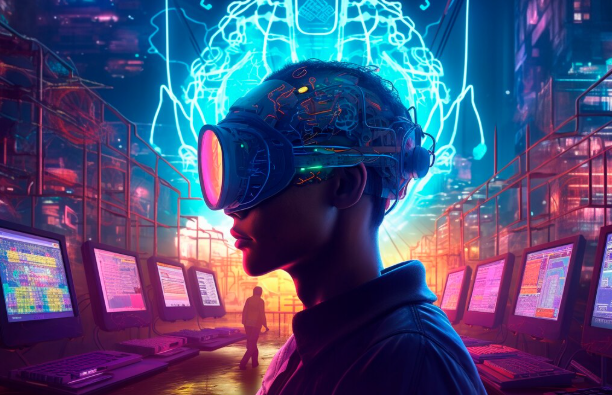
Predicting future trends and advancements in AI game development
The convergence of generative AI and game development is accelerating, leading to several exciting and potentially disruptive trends. We anticipate a significant rise in procedural content generation going beyond simple level design. Imagine AI not just creating landscapes, but crafting entire game narratives, complete with branching storylines and dynamically adjusting difficulty based on player behavior. This will dramatically reduce development time and cost, allowing smaller studios to compete with larger ones. In our experience, early adoption of these tools provides a significant competitive edge.
One key advancement will be in AI-driven character behavior. Current systems often rely on rigid scripting, but future iterations will use generative models to create truly believable, unpredictable NPCs. We’re already seeing promising results with AI generating realistic dialogue and animations, but the next frontier lies in creating characters with complex emotional states and motivations that evolve organically throughout gameplay. This requires sophisticated techniques like reinforcement learning and large-language models to simulate human-like decision-making. A common mistake we see is underestimating the computational power needed for truly intelligent NPCs.
Looking further ahead, we foresee the emergence of AI-assisted game balancing as a major development. Current methods rely heavily on manual testing and iterative adjustments, but AI could analyze vast amounts of player data to identify imbalances and automatically suggest tweaks. This could lead to far more refined and enjoyable gaming experiences, quickly adapting to player preferences and skill levels. The integration of predictive analytics with AI game balancing could provide even more tailored and personalized gameplay experiences, creating a dynamic and adaptive game environment.
Discussing the potential impact on the gaming industry
The democratization of game development through generative AI presents a paradigm shift for the gaming industry. We’ve seen firsthand how tools leveraging AI significantly reduce the time and resources required for asset creation, potentially leading to a surge in indie game development and a diversification of game genres. Smaller studios, previously hampered by budget constraints, can now compete more effectively with larger corporations. This increased competition could lead to a more innovative and exciting gaming landscape, fostering creativity in unforeseen ways.
However, this potential boom also presents challenges. A common concern is the potential displacement of traditional artists and programmers. While some roles may evolve, requiring upskilling in AI-assisted workflows, others might be rendered obsolete. The industry must proactively address this transition, investing in retraining initiatives and focusing on the uniquely human aspects of game design, such as storytelling and emotional engagement, which AI currently struggles to replicate convincingly. A balanced approach that integrates AI as a powerful tool alongside human creativity is crucial.
Looking ahead, the impact will extend beyond just asset creation. Generative AI could revolutionize game balancing, level design, and even narrative generation. We anticipate seeing a rise in procedurally generated content that’s significantly more nuanced and sophisticated than what’s currently available. Imagine dynamic game worlds that constantly evolve, adapting to player choices in unprecedented ways. This represents a significant leap forward in player agency and immersive experiences. This evolution, however, necessitates careful consideration of the ethical implications surrounding AI-generated content and potential biases within AI models.
Exploring ethical considerations and responsible AI development
The burgeoning use of generative AI in game development necessitates a serious examination of ethical considerations. A common mistake we see is overlooking the potential for algorithmic bias. AI models trained on existing game data may perpetuate and even amplify existing biases related to gender, race, or other sensitive attributes, leading to unfair or stereotypical representations within the game world. For instance, an AI generating character designs might disproportionately favor certain physical characteristics if the training data reflects those biases. Mitigating this requires careful curation of training datasets and ongoing monitoring of the AI’s output for potential biases.
Responsible AI development also requires addressing concerns around intellectual property and copyright. Generative AI models learn from existing content, raising questions about the fair use of copyrighted material in the creation of new assets. In our experience, proactively engaging with legal experts and ensuring transparency in the use of training data is crucial. This includes clearly documenting the sources used and implementing mechanisms to detect and prevent the unauthorized reproduction of existing copyrighted works. Furthermore, the use of AI-generated assets requires careful consideration of licensing and attribution to ensure compliance with intellectual property laws.
Finally, the potential impact on the human element of game development must be carefully considered. While AI can significantly enhance productivity, it’s vital to avoid a scenario where it replaces human creativity and artistry entirely. The responsible approach lies in leveraging AI as a tool to augment human capabilities, not to replace them. This requires a thoughtful integration of AI into existing workflows, fostering a collaborative relationship between human developers and AI systems. Striking this balance ensures the ethical and sustainable growth of generative AI in game development while safeguarding the unique contributions of human talent.
Launch Your App Today
Ready to launch? Skip the tech stress. Describe, Build, Launch in three simple steps.
Build
